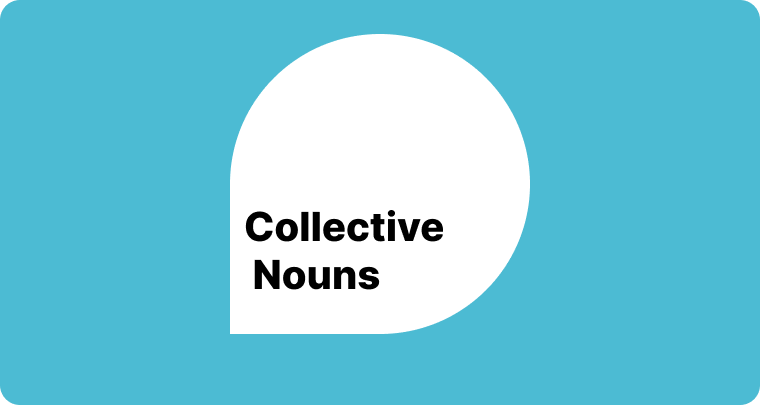
Introduction to Collective Nouns
Most people are familiar with common group names like a herd of cows or a pride of lions. But did you know a collection of otters can be called a raft? Or that swans in flight are referred to as a wedge?
These unique terms belong to a category known as collective nouns—words used to describe groups of people, animals, or things. The English language has roughly 200 such expressions.
What Are Collective Nouns?
A collective noun is a singular word that represents multiple individuals, creatures, or objects as a single unit:
The audience laughed the most during the comedic scenes of the film.
A flock of turkeys halted traffic as they made their way across the road.
Paleontologists unearthed a set of fossils from an Achillesaurus in Argentina.
Are Collective Nouns Singular or Plural?
Since collective nouns refer to multiple entities but are singular in structure, they can be tricky when it comes to subject-verb agreement. While they appear singular, they often represent a group of individuals.
In American English, collective nouns are typically followed by singular verbs:
The selection committee includes filmmakers, critics, and programmers.
A drove of pigs was damaging local gardens after escaping from a farm.
However, if the focus is on individual members of the group rather than the whole, a plural verb may be used:
Most of my family have birthdays in fall and winter.
The choir members were warming up in different keys.
Among the student body, the majority are from California.
In British English, using plural verbs with collective nouns is much more common:
The band were touring all summer.
The staff were always on lunch break when we visited the shop.
Three Useful Tips for Using Collective Nouns
Since collective nouns don’t always follow clear-cut grammar rules, keeping these strategies in mind will help ensure proper usage:
- Use Singular Verbs as the Default
In American English, collective nouns are generally treated as singular unless the sentence explicitly refers to individual members.
The club meets on Wednesdays.
A pod of dolphins was swimming near the ship.
Exception: The term police is always plural:
The police were already investigating when we arrived.
- Reword to Avoid Awkwardness
If a sentence sounds unnatural with a collective noun and a plural verb, consider restructuring it. Adding “members of” can clarify the sentence:
The jury were staying in different hotel rooms while sequestered.
The members of the jury were staying in different hotel rooms while sequestered.
Both are correct, but the second is often clearer.
- Maintain Consistency
Once you decide whether to use a singular or plural verb with a collective noun, stay consistent throughout the passage. This also applies to pronouns referring back to the noun.
The company is performing well this quarter. It has regained its financial stability.
The group of passengers will scatter as soon as they exit the plane.
Examples of Collective Nouns
Some collective nouns, like group, bunch, couple, and pair, are versatile and can refer to people, animals, or things:
A bunch of my colleagues is attending the concert.
Sam grabbed a bunch of magazines before boarding the flight.
Other collective nouns are more specialized:
Common Collective Nouns for People
Army
Audience
Band
Board
Cast
Choir
Class
Club
Committee
Community
Crew
Crowd
Family
Jury
Parliament
Staff
Team
Troupe
Common Collective Nouns for Objects
Array
Bouquet
Collection
Fleet
Forest
Galaxy
Heap
Pile
Series
Stack
Common Collective Nouns for Animals
Brood
Colony
Flock
Gaggle
Herd
Litter
Pack
Pride
School
Shoal
Swarm
Frequently Asked Questions About Collective Nouns
What is a collective noun?
A collective noun is a word that describes a group of people, animals, or objects as a single entity.
How many collective nouns exist in English?
English contains about 200 collective nouns.
Should collective nouns be treated as singular or plural?
Although collective nouns are singular in form, they can function as either singular or plural. In American English, they are usually paired with singular verbs, unless emphasizing individual members of the group. In British English, they are more commonly treated as plural.
How do you determine the correct pronoun for a collective noun?
The pronoun must match the noun’s number—if the noun is singular, use a singular pronoun; if plural, use a plural pronoun.
